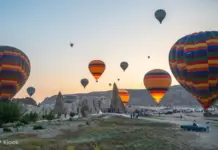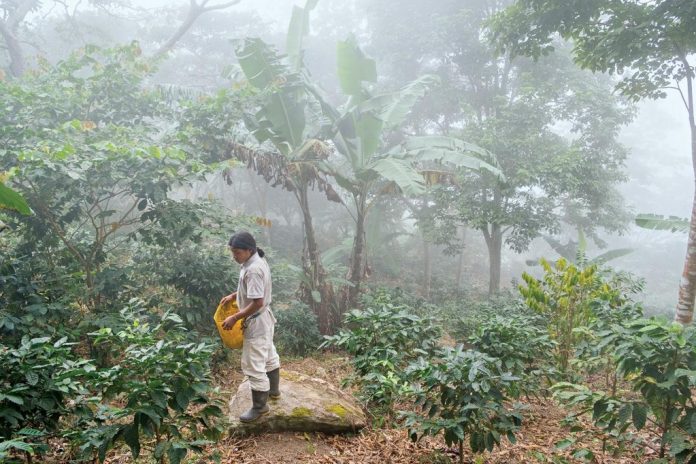
A new coffee destination bears fruit in the country’s north.
- What to eat in Malaysia? — 10+ most famous, best dishes & must try food in Malaysia
- Where & what to eat in Kaohsiung? — Top 15 Kaohsiung must eat food & best places to try them
- Bali food guide — 10 best local foods in Bali & best places to find them
- Tasting Babi Guling Bali – The most famous food in Bali
- What to eat in Seoul blog — 9 must-eat foods in Seoul & best places to eat them
Something is brewing in the small Colombian town of Minca. It smells of caramel, bark, charcoal, and chocolate. The source? Coffee beans, fresh from backyard roasters, their sharp burnt odor cutting through the humid tropical haze.
Here in northern Colombia, the Sierra Nevada de Santa Marta range rises straight from the shores of the Caribbean. Long left undeveloped due to political troubles, this now peaceful area draws urban Colombians and savvy international visitors to the palm-fringed beaches of Tayrona National Park, the ancient archaeological site of Ciudad Perdida, and the birding paradise of the jungles around Minca.
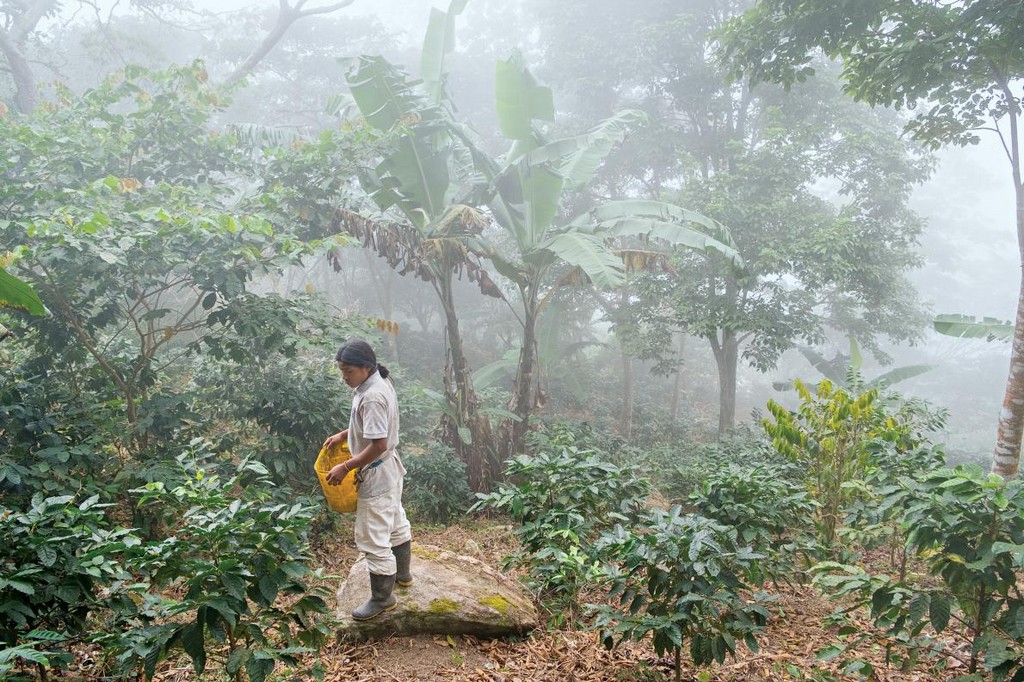
Recently, Minca and the Sierra Nevada have begun to attract coffee-loving travelers, a collection of connoisseurs and curious backpackers eager to discover what Juan Pablo Campos, general manager of the Lohas Beans trade group, calls “the most important Colombian region for organic coffee.”
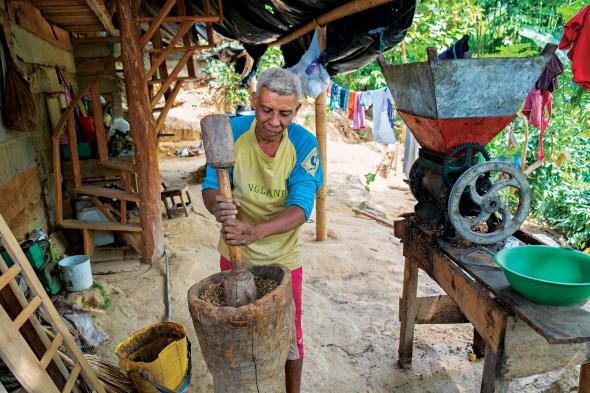
While coffee is not native to Colombia, the plant has flourished for centuries on the country’s steep, shade-covered mountains, with rainfall, altitude, and temperatures ideal for growing the mellow, medium-bodied arabica-style bean. Colombia has been exporting coffee since the early 1800s, and in 2015 alone shipped 840,000 tons of coffee beans. Represented by the fictional ambassadors Juan Valdez and his trusty burro, Conchita, “Café de Colombia” has become known worldwide.
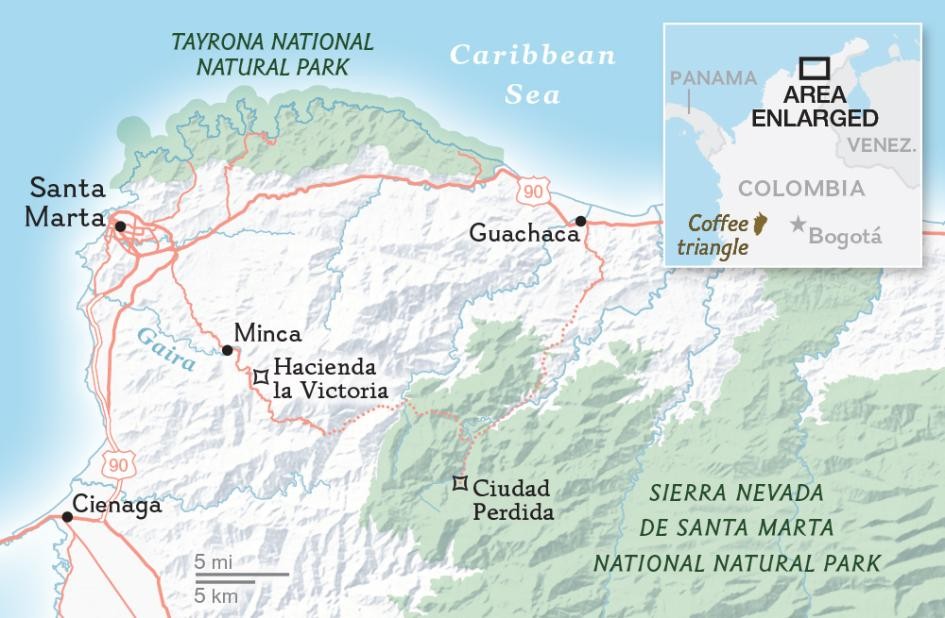
Colombia’s better-known “coffee triangle” in the country’s southwest now supports a well-trod tourist track between luxury lodges and standardized plantation tours, but the Sierra Nevada still offers an authentic journey into the past—and a taste of the future of Colombian coffee. In remote highlands, indigenous tribes of Kogi and Arhuaco lead the way in organic coffee production, developing a sustainable farming network that combines traditional spiritual beliefs with modern planting knowledge. These farms embrace generations-old techniques and tools to produce sought-after organic blends, with many beans “triple certified” as organic, fair trade, and rain forest-friendly.
The gateway to the region is the sunny Caribbean seaside city of Santa Marta, where the bitter street blend of tinto (from the Spanish word for ink) black coffee is sweetened with spoonfuls of sugar. Coffee aficionados will skip the tinto, as well as the ubiquitous Juan Valdez chain stores, and head to Santa Marta’s smaller shops, such as Ikaro Café.
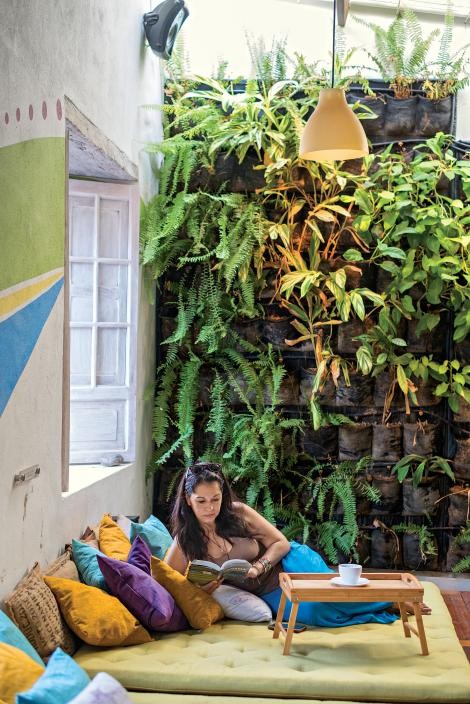
Exploring the area’s coffee culture is best done during harvest season, from about November through February, and can be as simple as hiring a taxi for the approximately 40-minute, 15-mile bumpy ride from the sea to the hills. Visits to tribal lands require special permission or an organized trip from an approved local operator such as Wiwa Tour.
A stop at Hacienda la Victoria above Minca is like traveling to 1892, when the farm was founded. Husband-and-wife owners Micky and Claudia Weber provide a bean-to-brew education on growing, processing, and roasting coffee. Visitors will see the same well-oiled machinery in use since the farm’s beginnings: water-powered generators, gravity-driven sorters, and hand-cranked presses. Tours conclude with a tasting of their blends, often accompanied by homemade apple pie. Other local farms promote scheduled and drop-in tours and tastings of high-end coffees—a difference from only a few years ago when Colombia had an unofficial policy of “export the best, and drink the rest.”
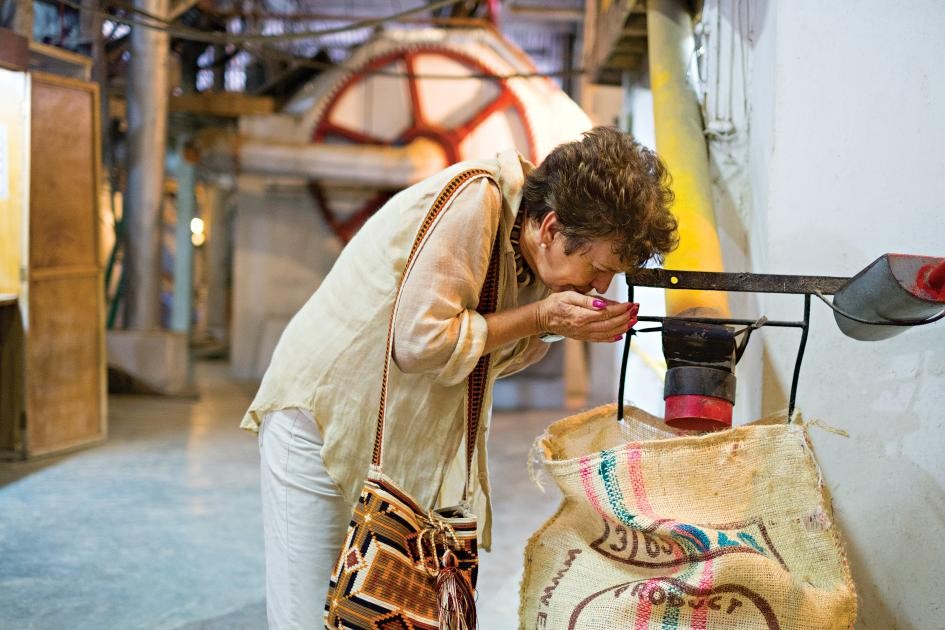
Drinking a good cup of coffee is just the beginning of a trip to Minca, where swaths of coffee beans dry on streetside tarps in season. Hiking trails wind through Sierra Nevada rain forest to the Marinka and Pozo Azul waterfalls. Hundreds of butterfly and bird species native to the area include “parrots so plentiful they’re like pigeons,” according to one visitor.

Minca plantations may flash back a few generations, but indigenous Kogi farms (or those of the more remote Arhuaco), located deeper in the mountains, are a journey back centuries. The tribes live without electricity in traditional adobe huts with thatched roofs. They often carry their mochila (handwoven knapsack) and wear homespun cotton clothing, white to symbolize the purity of nature. Their traditional conical headgear represents sacred snowcapped mountain peaks. Their mamos (spiritual guides) perform purification ceremonies of prayer and song prior to planting and harvesting the beans.
It all works in harmony with the land, their neighbors, and modern markets, nurturing a future model not only for growing coffee but for ripening Colombian tourism itself.
Where to get a cup of Joe
Ikaro Café Local organic coffee, vegan and vegetarian fare, and a bright interior make this one of the best hangouts in Santa Marta.
Tienda Café Fans of this classic Minca spot savor their cups of local roasts (and a brownie) outside on the porch, but head inside for a trove of handicrafts for sale.
Hacienda la Victoria Enjoy un café at its source at this 124-year-old family-owned coffee plantation, which also offers tours and an on-site bistro.
Where to stay
Ecohabs Tayrona Thatched seaside bungalows designed by a local architect nestle in Tayrona National Park.
La Brisa Loca At this social Santa Marta hostel, friendships form at the courtyard pool and the rooftop bar.
Casa Loma Minca The view from the top is worth the climb up the long flight of stairs to this Minca hostel on a hill.
You can find, check rates, reviews & availability for the Minca hotels on Booking.com.































![10 best airports in Asia in 2016 [RANKED] kuala-lumpur-international-airport-best airports in asia in 2016 by skytrax ratings](https://livingnomads.com/wp-content/uploads/2016/08/29/kuala-lumpur-international-airport-best-airports-in-asia-in-2016-by-skytrax-ratings-218x150.jpg)











